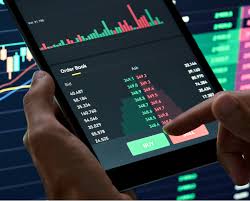
Mastering Trading Crypto Charts
The world of cryptocurrencies is both exciting and volatile, and understanding Trading Crypto Charts https://prolinksdirectory.com/website-list-1256/ is essential for anyone looking to navigate it successfully. In this article, we will delve into the various aspects of crypto chart analysis, tools you will need, strategies to follow, and common pitfalls to avoid. By the end, you’ll be equipped with the knowledge necessary to make informed trading decisions.
Understanding Crypto Charts
Crypto charts are visual representations of price movements over a specified period. They depict price changes, trading volumes, and other market dynamics that can help traders understand market trends. There are several types of crypto charts, including line charts, bar charts, and candlestick charts, each providing unique insights.
Line Charts
Line charts are the simplest form of charts where a single line connects the closing prices over time. They provide a clear depiction of the overall trend but lack detail about price volatility and trading volume. Line charts are ideal for long-term analysis but are often insufficient for day trading strategies.
Bar Charts
Bar charts provide more information than line charts, showing the open, high, low, and close (OHLC) prices for each time period. Each bar represents price movement, with the left side showing the opening price and the right side indicating the closing price. Bar charts are useful for traders who want to analyze market volatility and gather more insight into price movements.
Candlestick Charts
Candlestick charts are popular among traders due to their visual appeal and informative nature. Each “candlestick” symbolizes price movement for a certain time frame, displaying the opening, closing, high, and low prices. Color coding—green for bullish candles and red for bearish candles—allows quick identification of market sentiment. Candlestick patterns can signal potential reversals or continuations in trends.
Technical Analysis Basics
Technical analysis is a methodology used to evaluate cryptocurrencies and identify trading opportunities based on price patterns and market dynamics. Here are foundational concepts of technical analysis you should know:
Support and Resistance Levels
Support levels represent price points where a downtrend can pause due to buying interest, while resistance levels are points where upward movement can stall due to selling pressure. Identifying these levels can help traders make strategic entry or exit points.
Trends

Understanding market trends is crucial. The three types of trends are upward (bullish), downward (bearish), and sideways (neutral). Identifying the current trend can help you align your trading strategies accordingly.
Indicators and Oscillators
Indicators, such as the Moving Average (MA), Relative Strength Index (RSI), and Bollinger Bands, provide insights into market conditions and potential trend reversals. Oscillators, on the other hand, help identify overbought or oversold conditions, assisting traders in making timely decisions.
Chart Patterns
Recognizing chart patterns is a vital skill in cryptocurrency trading. Patterns such as Head and Shoulders, Double Tops, and Flags can give clues about future price movements. Here are some common patterns:
Head and Shoulders
This pattern indicates a reversal from a bullish trend to a bearish trend. It consists of three peaks—the highest peak is the head, while the other two are shoulders. When the price breaks below the neckline formed by connecting the lows, it signals a potential downtrend.
Double Tops and Bottoms
Double tops signify a bearish reversal, occurring when prices reach a high twice but fail to break above it. Conversely, double bottoms indicate a bullish reversal when the price hits a low two times without breaking lower.
Flags and Pennants
Flags and pennants are continuation patterns that indicate the price will continue in its previous direction. Flags appear as small rectangles that slope against the prevailing trend, while pennants appear as symmetrical triangles that form after strong price movements.
Risk Management Strategies
Even the best technical analysis cannot guarantee success. Thus, risk management is crucial. Here are some strategies:
Setting Stop-Loss Orders
Stop-loss orders can prevent excessive losses. Set them at a price point that, if reached, signals your exit from the trade. This prevents emotional decision-making and potential greater losses.

Position Sizing
Determine the percentage of your total capital to risk on each trade. A commonly suggested strategy is to risk only 1-2% of your total capital on a single trade. This ensures that a string of losses doesn’t deplete your account.
Diversification
Diversifying your portfolio reduces risk by spreading investments across various cryptocurrencies. This way, poor performance in one asset may be countered by better performance in others.
Emotional Discipline in Trading
Trading, especially in the crypto market, can evoke strong emotions such as fear and greed. Developing emotional discipline is crucial for long-term success. Here are some tips:
Stick to Your Trading Plan
Always adhere to your pre-established trading plan. Avoid making impulsive decisions based on market swings or social media hype. Trust your analysis and follow your strategy.
Practice Patience
Successful trading requires patience. Don’t rush to enter or exit trades without analyzing the market thoroughly. Wait for your setups to materialize and for the market to confirm your analysis.
Keep a Trading Journal
Maintain a trading journal to track your trades, decisions, and emotions. Reviewing this journal can help you identify patterns that contribute to your success or failure, enabling you to adjust your strategies accordingly.
Conclusion
Understanding and effectively utilizing Trading Crypto Charts is indispensable for anyone looking to succeed in cryptocurrency trading. By grasping the fundamentals of chart analysis, technical indicators, and the psychological aspects of trading, you can enhance your trading performance. Remember, trading is not just about making profits; it’s about managing risks and making informed, strategic decisions.
As you embark on your trading journey, continuously educate yourself and adapt to changing market conditions. The world of cryptocurrencies is ever-evolving, and the successful trader is one who keeps learning and refining their skills.
